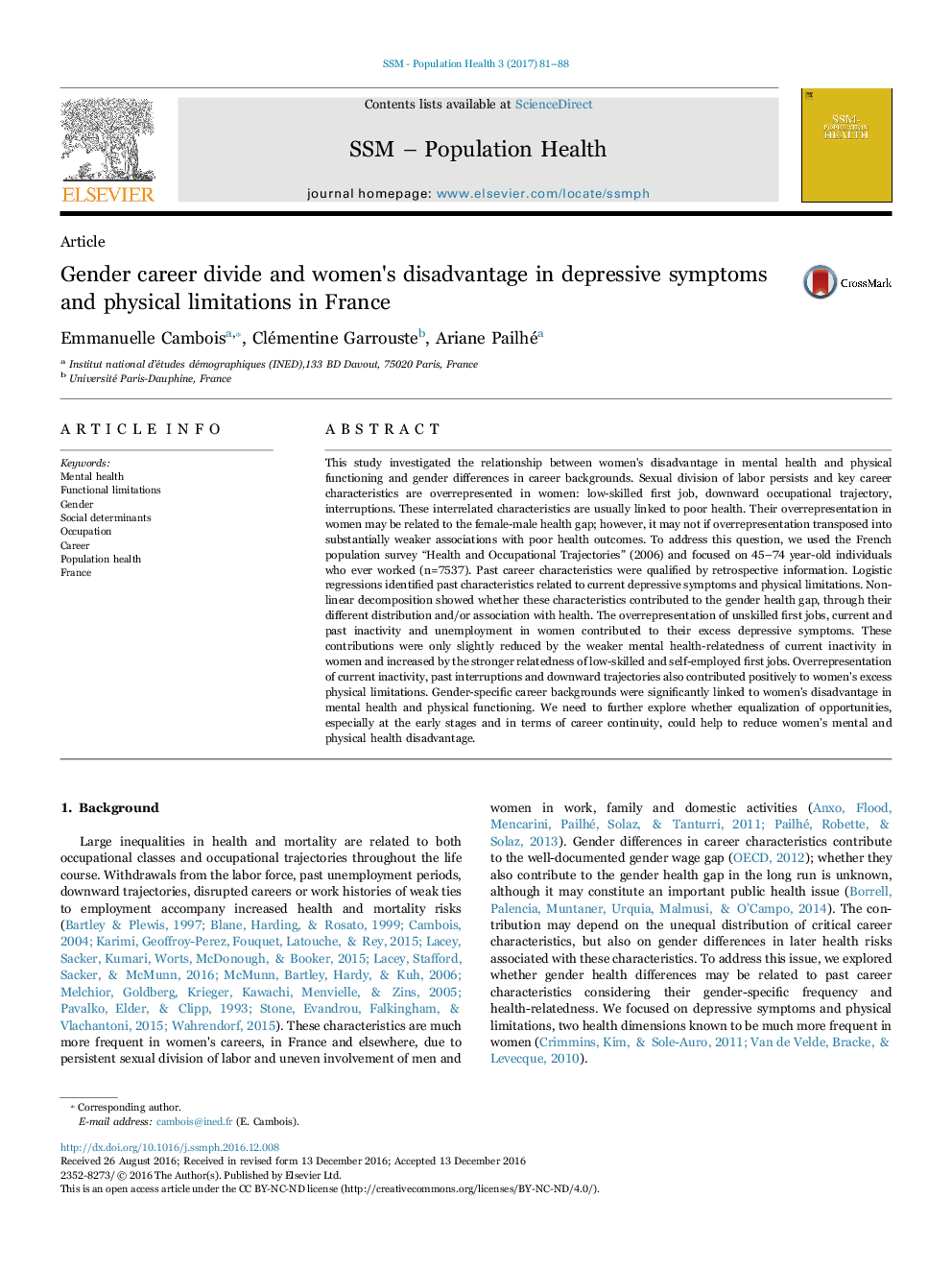ترجمه فارسی عنوان مقاله
تقسیم شغلی جنس و ضعف زنان در علائم افسردگی و محدودیت های فیزیکی در فرانسه
عنوان انگلیسی
Gender career divide and women's disadvantage in depressive symptoms and physical limitations in France
| کد مقاله | سال انتشار | تعداد صفحات مقاله انگلیسی |
|---|---|---|
| 104665 | 2017 | 8 صفحه PDF |
منبع

Publisher : Elsevier - Science Direct (الزویر - ساینس دایرکت)
Journal : SSM - Population Health, Volume 3, December 2017, Pages 81-88
ترجمه کلمات کلیدی
سلامت روان، محدودیت های کاری، جنسیت، تعیین کننده های اجتماعی، اشتغال، حرفه، سلامت جمعیت، فرانسه،
کلمات کلیدی انگلیسی
Mental health; Functional limitations; Gender; Social determinants; Occupation; Career; Population health; France;

